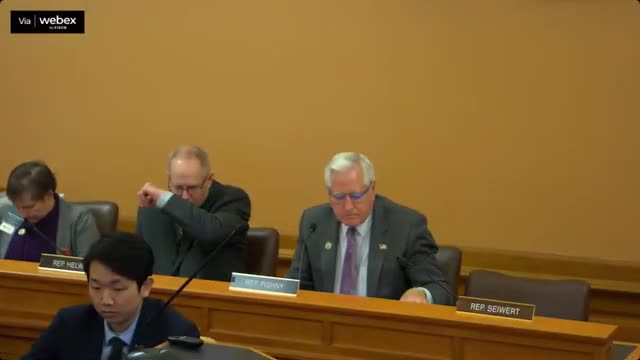Kansas Geological Survey reveals alarming aquifer depletion map amid irrigation concerns
January 28, 2025 | Committee on Water, Standing, HOUSE OF REPRESENTATIVES, Committees, Legislative, Kansas
This article was created by AI summarizing key points discussed. AI makes mistakes, so for full details and context, please refer to the video of the full meeting. Please report any errors so we can fix them. Report an error »

Kansas Geological Survey Director Jay Cabas presented critical findings on the High Plains aquifer during a recent House Committee on Water meeting, emphasizing the urgent need for water management in the state. Cabas, who has been with the Kansas Geological Survey for two years, shared a detailed presentation highlighting significant changes in the aquifer's thickness due to large-scale irrigated agriculture.
The most striking visual from his presentation was a map illustrating the percent change in water thickness across the High Plains aquifer. The map revealed alarming data, with red areas indicating over a 50% reduction in aquifer thickness since the onset of extensive irrigation practices. This research, compiled over decades by a dedicated team of geologists and technicians, underscores the ongoing challenges facing Kansas's water resources.
Cabas noted that the latest findings are only days old, reinforcing the need for timely action and informed decision-making regarding water usage and conservation strategies. The committee's discussions are expected to shape future policies aimed at addressing the critical state of the aquifer and ensuring sustainable water management for Kansas residents.
As the committee continues to explore solutions, the implications of these findings could lead to significant changes in agricultural practices and water resource management across the state. The urgency of the situation calls for immediate attention from both policymakers and the agricultural community to safeguard Kansas's vital water supply.
The most striking visual from his presentation was a map illustrating the percent change in water thickness across the High Plains aquifer. The map revealed alarming data, with red areas indicating over a 50% reduction in aquifer thickness since the onset of extensive irrigation practices. This research, compiled over decades by a dedicated team of geologists and technicians, underscores the ongoing challenges facing Kansas's water resources.
Cabas noted that the latest findings are only days old, reinforcing the need for timely action and informed decision-making regarding water usage and conservation strategies. The committee's discussions are expected to shape future policies aimed at addressing the critical state of the aquifer and ensuring sustainable water management for Kansas residents.
As the committee continues to explore solutions, the implications of these findings could lead to significant changes in agricultural practices and water resource management across the state. The urgency of the situation calls for immediate attention from both policymakers and the agricultural community to safeguard Kansas's vital water supply.
View full meeting
This article is based on a recent meeting—watch the full video and explore the complete transcript for deeper insights into the discussion.
View full meeting
